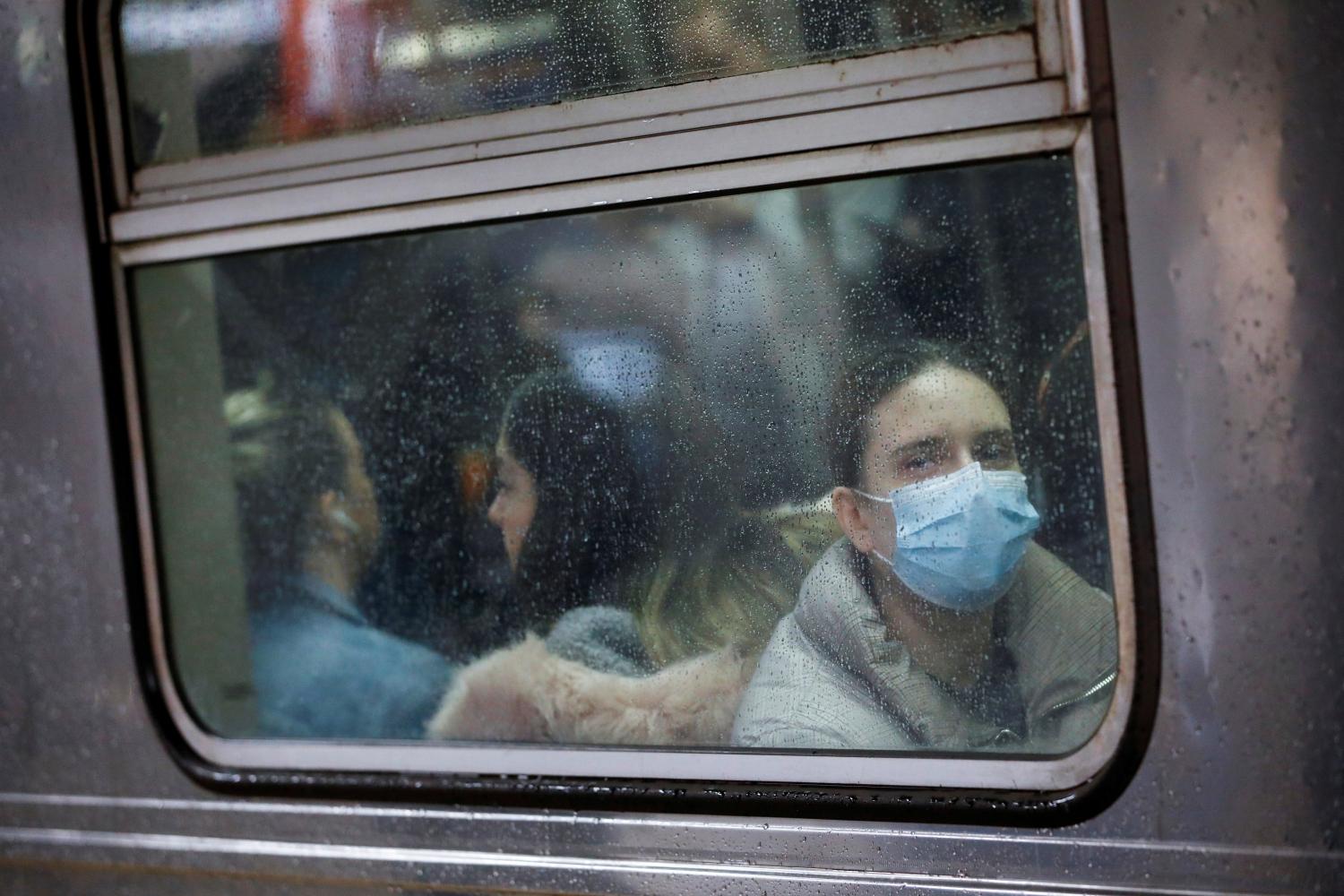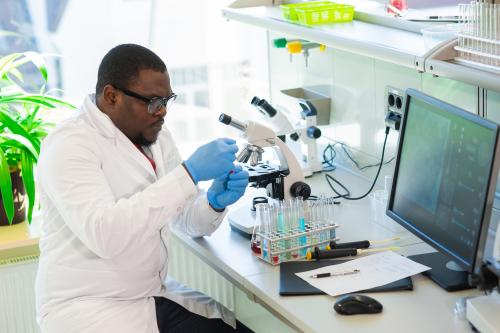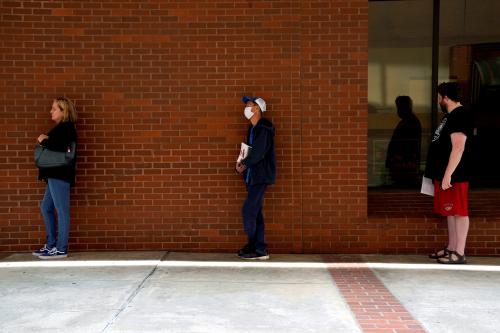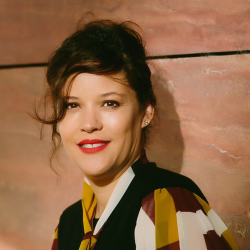Last month, I wrote about innovation districts’ critical efforts to mitigate the impacts of COVID-19. Since the outset of the pandemic, these districts have leveraged their academic research capabilities, innovation infrastructure (e.g., laboratories, advanced technologies, Big Data for modeling), and local and global peer networks to understand and contain the spread of the coronavirus. These efforts demonstrate the power of coordinated and concentrated efforts to address an unprecedented global challenge.
In the month since I first wrote about these efforts, the pandemic has intensified exponentially and now impacts at least 183 countries. As the urgency for solutions increases, 11 additional districts have come forward with innovative approaches to combatting the virus. The Global Institute on Innovation Districts has now collected detailed information from 18 total innovation districts in nine countries that are working to identify solutions to the pandemic—demonstrating how these places are essential in tackling highly complex and cross-sectoral challenges.
Described below are some of these new insights:
New York’s Buffalo Niagara Medical Campus is an innovation district with strengths in genomics, vascular medicine, Big Data, AI, and machine learning. Their COVID-19 efforts include:
- A University at Buffalo-led clinical study to investigate why the novel coronavirus barely affects most children;
- An experimental treatment led by the Roswell Park Comprehensive Cancer Center and the University at Buffalo’s Jacobs School of Medicine and Biomedical Sciences to prevent the overactive inflammatory response in critically ill patients’ lungs;
- Kits that convert commercial BiPAP and/or CPAP machines into emergency ventilators, produced by a startup based at the Buffalo Niagara Medical Campus.
The Cleveland Health-Tech Corridor is an innovation district anchored by Case Western Reserve University, the Cleveland Clinic, University Hospitals, and Cleveland State University, with research specializations in health care as well as biomedical and high-tech solutions. Their COVID-19 efforts include:
- Two clinical trials conducted by University Hospitals to identify the effects of an antiviral drug in adults;
- Stem cell therapy to treat acute respiratory distress syndrome (ARDS), fast-tracked by a district-based biotech company working alongside the FDA;
- A Greater Cleveland COVID-19 Rapid Response Fund of $3.95 million for nonprofits on the frontline of the pandemic, sponsored by the Cleveland Foundation and northeast Ohio philanthropies.
Nova Scotia’s Halifax Innovation District is a growing ocean tech, clean tech, and health- and life-sciences hub. Their efforts to combat COVID-19 include:
- A point-of-care device developed by Dalhousie University to help emergency room doctors predict if someone presenting with the disease will have a mild or severe case;
- Efforts to develop a vaccine candidate for a phase-one clinical study. This highly collaborative process included two universities, a hospital, a health provider, and other actors;
- Four Halifax Innovation District companies are advancing a range of technologies to combat the virus.
The Innovation Quarter in Winston-Salem, N.C. is a mixed-use innovation district anchored by Wake Forest School of Medicine, Wake Forest University, and Inmar Intelligence, and comprised of over 100 companies and startups. Their research includes:
- The development of a new protective face mask by health, biomedical engineering, and regenerative medicine departments, along with local manufacturers;
- The Wake Forest Institute for Regenerative Medicine is testing samples of 13 different designs from approximately 400 masks to determine which masks best remove particles 0.3 to 1.0 micron in diameter and how their performance compared to that of standard surgical masks;
- Efforts led by Wake Forest Baptist Health and Inmar Intelligence to expand direct-to-consumer communications capabilities to deliver real-time information related to COVID-19.
Australia’s Liverpool Innovation Precinct is a health care and education precinct anchored by Liverpool Hospital, the Ingham Institute for Applied Medical Research, the University of New South Wales, the University of Wollongong, and Western Sydney University. Its efforts include:
- A clinical trial specific for COVID-19-positive patients who are in ICU; an interventional study to access clinical, virological, and immunological outcomes in patients treated with specific drug treatments; and an interventional study for ICU patients;
- A replicable design for a ventilator, created by biomedical engineers at the University of Sydney and the Liverpool Innovation Precinct.
MaRS Discovery District in Toronto is home to 150 research institutions, startups, and global technology and science companies, and is part of the larger Toronto Discovery District. Their efforts include:
- An AI startup at MaRS sounded the alarm about the severity of the outbreak in December 2019 when the disease was localized in Wuhan, China;
- In early March, researchers from Sunnybrook Research Institute, McMaster University, and the University of Toronto isolated the agent responsible for the outbreak;
- Efforts to discover antiviral drug candidates through existing FDA-approved drugs, led by a biotechnology company at MaRS;
- With backing from the Canadian government, a MaRS-based company is creating portable COVID-19 testing units that can deliver results in 30 minutes;
- MaRS startups are banding together against the coronavirus, shifting their everyday business to manufacture ventilators, provide mental health therapy, and use tech to help eradicate the pandemic.
Colombia’s Medellín Innovation District is anchored by two universities and four hospitals, with research specializations in information and communications technology (ICT), energy, and health care. Efforts include:
- Several mobile technology companies are gathering and analyzing data on how the virus is spreading, who gets infected and where, and how patient care is evolving;
- An effort dubbed InnspiraMED, led by a collaboration of district-based organizations, is prototyping a ventilator that costs under $500.
The Midtown Innovation District in Atlanta is anchored by Georgia Tech, Technology Square, and elements of Emory University and the Savannah College of Art and Design. Their efforts include:
- Emory University has approval from the FDA to begin human clinical trials for a drug to treat the novel coronavirus;
- Labs across Georgia Tech have pulled together tens of thousands of PPE items for health care workers as they diagnose and treat COVID-19;
- Georgia Tech, in collaboration with Emory University, is building and testing a low-cost ventilator;
- Georgia Tech engineers are designing and producing new protective gear using 3D printing and laser cutting.
Oslo Science City in Norway is comprised of a leading university and university hospital, the Oslo Science Park, and clusters of startups. Their research efforts to address the virus include:
- An Oslo University Hospital-led study comparing the safety and effectiveness of four therapy treatments against COVID-19;
- Research that revisits the 100-year-old treatment method used during the 1918 Spanish flu, led by Oslo University Hospital;
- The development of an antiviral medicine to treat patients with COVID-19 and a single-patient medical isolation and transport system.
North Carolina’s Research Triangle Park is the largest science park in the United States, and includes Duke University, NC State University, and the University of North Carolina at Chapel Hill, along with over 300 companies. Their COVID-19 efforts include:
- A biopharmaceutical company with a GMP manufacturing plant is developing a plant-based vaccine against the novel coronavirus;
- The development of the first FDA-approved antibody test by a life-sciences company, allowing the test to now be manufactured and distributed;
- Another company is using its patented cell-based technology to develop a vaccine.
Philadelphia’s University City District is an innovation district anchored by the University of Pennsylvania, Drexel University, Children’s Hospital of Philadelphia, and the University City Science Center. Their efforts include:
- The Science Center has connected nine early-stage technologies focused on COVID-19 to a government-led network focused on the development and procurement of technologies;
- Scientists at the Monell Chemical Senses Center are collecting scientifically reliable data regarding taste and smell functions in COVID-19 patients.
These efforts—though only a partial list—illustrate the power of innovation districts in combatting this virus, as well as the broader importance of collaborative research in solving global challenges.
The Brookings Institution is committed to quality, independence, and impact.
We are supported by a diverse array of funders. In line with our values and policies, each Brookings publication represents the sole views of its author(s).








Commentary
How ‘innovation districts’ are continuing the fight against COVID-19
April 28, 2020